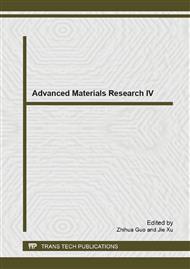p.238
p.245
p.250
p.254
p.261
p.266
p.271
p.275
p.280
Product Rich in Phosphorus Produced from Phosphorus-Contaminated Water
Abstract:
The study investigates the capacity of different soils and byproduct materials on removal of phosphorus from water. The aim of this study has been drawn to gain a product rich in phosphorus, which can be recycled by the phosphorus industry or may directly be used as a fertilizer. For the development of this phosphorus removal and recovery method, batch and column experiments were carried out in the laboratory scale to evaluate the removal of phosphorus from water under dynamic conditions. Three columns were filled with mixed soils and marble dust and loaded with a phosphorus solution 100 mg/l concentration. The results showed that using the marble dust as adsorbent among other materials could be removing more than 93% of phosphorus from aqueous solution.
Info:
Periodical:
Pages:
261-265
Citation:
Online since:
February 2014
Authors:
Price:
Сopyright:
© 2014 Trans Tech Publications Ltd. All Rights Reserved
Share:
Citation:


